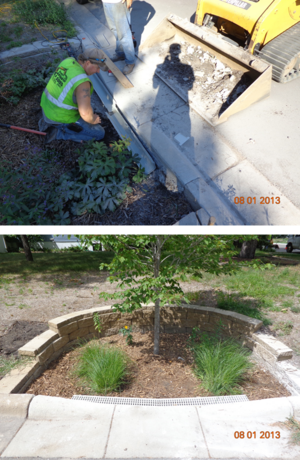
Difference between revisions of "Pretreatment"
m |
m |
||
| Line 25: | Line 25: | ||
*[[Photo gallery for pretreatment]] | *[[Photo gallery for pretreatment]] | ||
| − | + | ||
| − | + | *[[Pretreatment - Hydrodynamic separation devices]] | |
| − | *[ | + | *[[Pretreatment - Screening and straining devices, including forebays]] |
| − | *[ | + | *[[Pretreatment - Above ground and below grade storage and settling devices]] |
| − | *[ | + | *[[Pretreatment - Filtration devices and practices]] |
| − | *[ | + | *[[Pretreatment - Other pretreatment water quality devices and practices]] |
| − | *[ | + | *[[Pretreatment - Additional considerations]] |
Revision as of 17:44, 12 June 2019

The Manual user will notice that many of the stormwater practices discussed in this Manual recommend pretreatment as an integral part of the BMP application. In fact, in many applications (ex. infiltration, stormwater ponds), the BMP would not be properly used if pre-treatment is ignored. The simple reason for the use of pretreatment techniques is the necessity to keep a BMP from being overloaded, primarily by sediment. Pretreatment can also be used to dampen the effects of high or rapid inflow, dissipate energy, and provide additional storage. All of these ancillary benefits help BMP performance.
Pretreatment is a required part of infiltration and filtration practices covered under the Minnesota Construction Stormwater General Permit. This manual describes three general types of pretreatment practices - settling devices, screens, and vegetated filter strips. These are described on the pages below.
- Overview and methods of pretreatment
- Overviews for different types of pretreatment practices
- information for specific types of pretreatment practices
- Case studies for pretreatment
- References for pretreatment
- Links for pretreatment
- Definitions for pretreatment
- Supporting material for pretreatment
- Photo gallery for pretreatment
- Pretreatment - Hydrodynamic separation devices
- Pretreatment - Screening and straining devices, including forebays
- Pretreatment - Above ground and below grade storage and settling devices
- Pretreatment - Filtration devices and practices
- Pretreatment - Other pretreatment water quality devices and practices
- Pretreatment - Additional considerations
The following page was previously included in this pretreatment section of the manual. Much of this information has been updated and the reader is encouraged to use the information in the updated sections, shown in the above Table of Contents. However, there may be some useful information on this page. We hope to eventually update the information on this page. Flow-through structures for pre-treatment